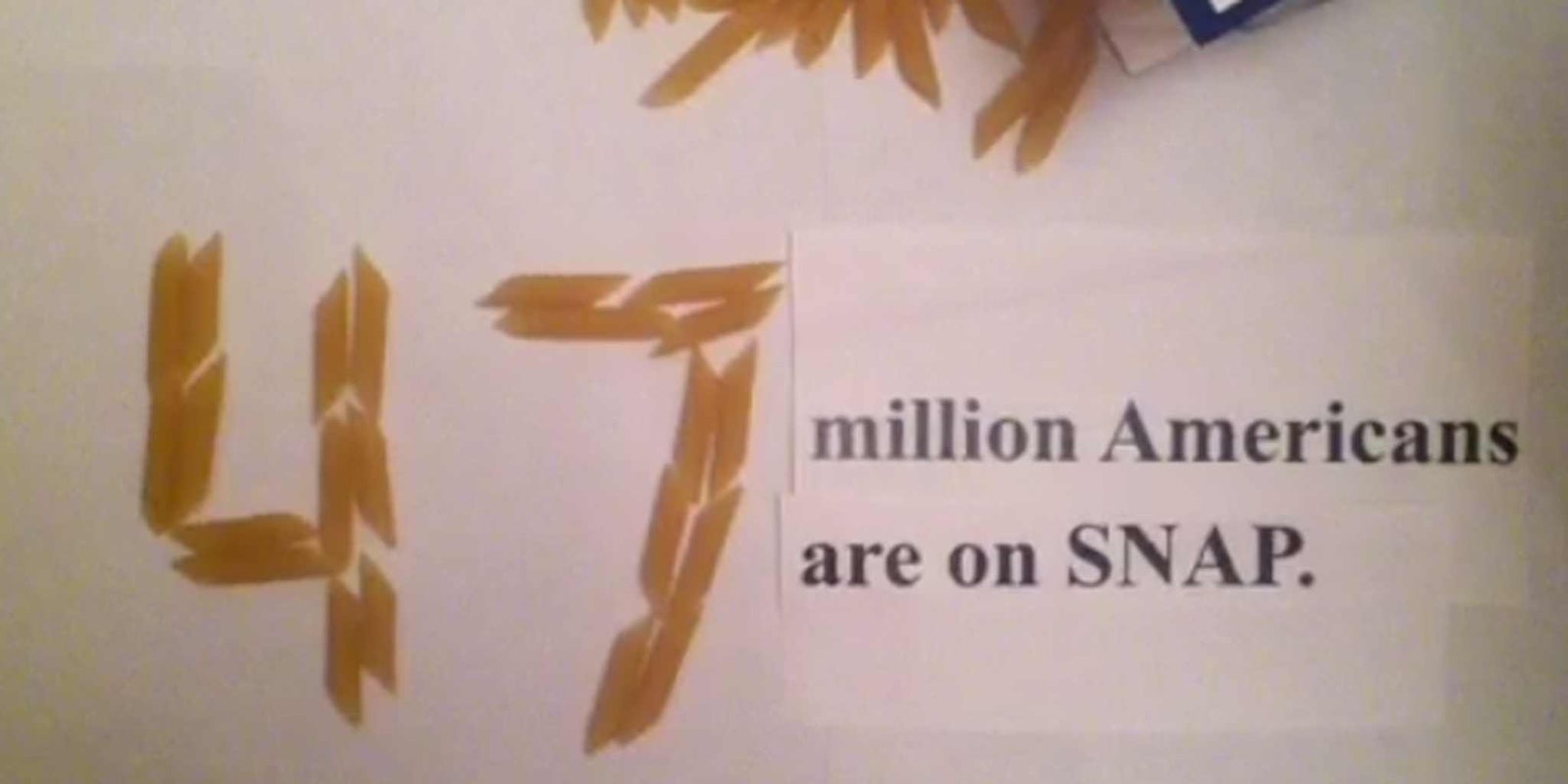Unfortunately for the millions of Americans on the Supplemental Nutrition Assistance Program (SNAP)—commonly known as food stamps—Congress is considering cutting funding by $2 billion per year for 10 years. In response, Rep. Jared Huffman (D-Calif.) has taken to Vine in protest.
Huffman’s team produced three infographics on Vine to show the fundamental reasons not to cut SNAP:
1) “47 million Americans are on SNAP”
2) “In 2011, 15% of Americans lived in poverty”
3) “75% of SNAP recipients are families with children”
A member of Huffman’s staff told the Daily Dot the congressman is further promoting awareness of the bill by taking the SNAP Challenge, “limiting himself to $4.50 a day for food for 5 days.”
Certainly, vining infographics made from apples and beans is traditionally out of character for a congressperson. But Huffman isn’t the first to turn to the new medium. Earlier this week, Rep. Eric Swalwell (D-Calif.) vined his vote against the controversial Pain-Capable Unborn Child Protection Act, which would make it more difficult for women to have abortions.
Vine, a new mobile app owned by Twitter that allows users to create and share six-second videos, has already amassed 13 million users. The app’s reach has so far proven to be broad, attracting everyone from journalists to animators with the notion that you can say a lot in only six seconds.
If nothing else, Huffman and Swalwell’s vines are creative attempts to reach young constituents. And they might be onto something: Short, engaging vines may be the ideal medium for politicians looking to spread their messages on social networks, where brevity and virality are the law of the land.
Correction: An earlier version of this article reported that Congress is considering cutting funding by $20 billion. This figure is over 10 years.
Photo via Jared Huffman/Vine
